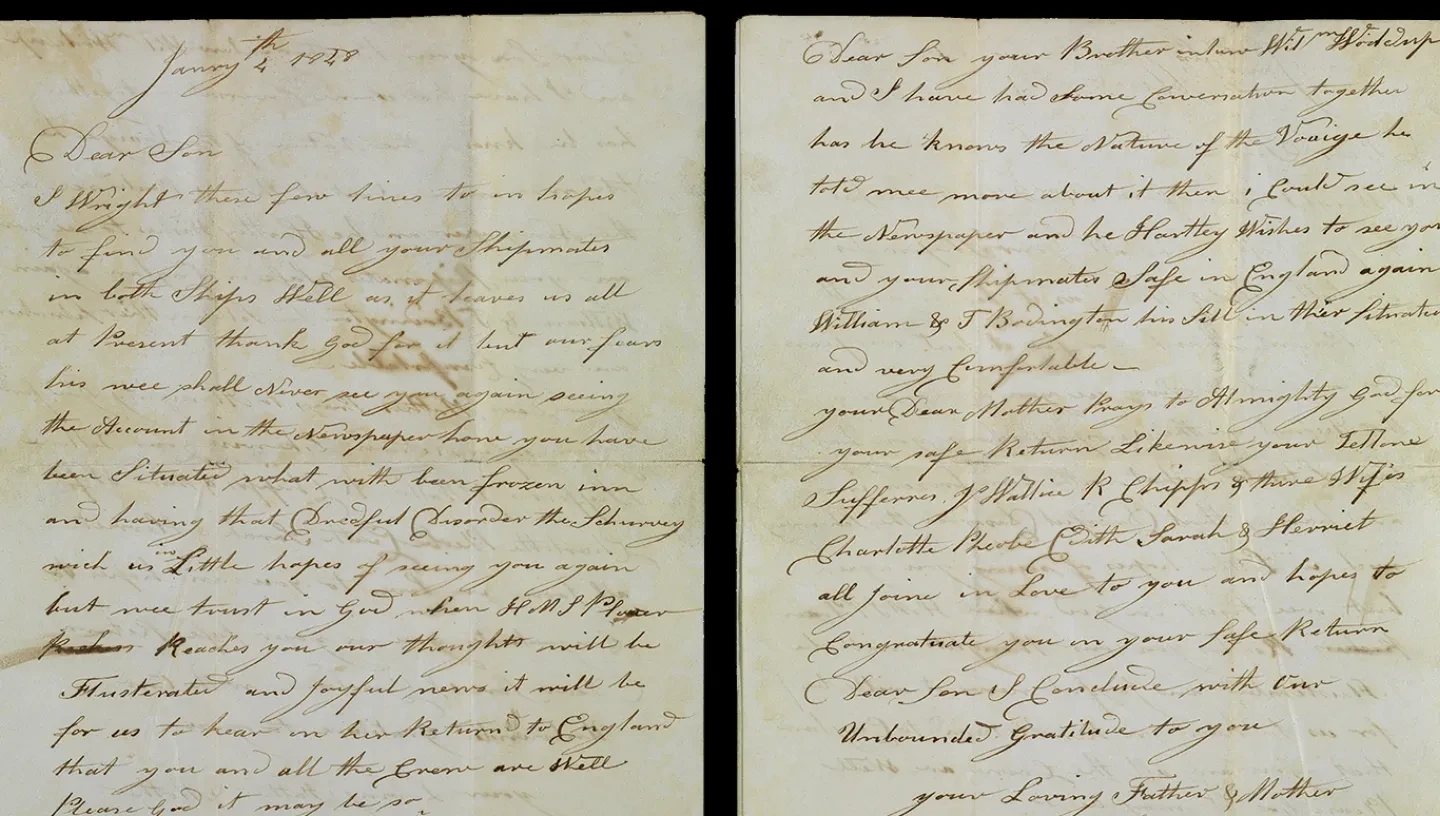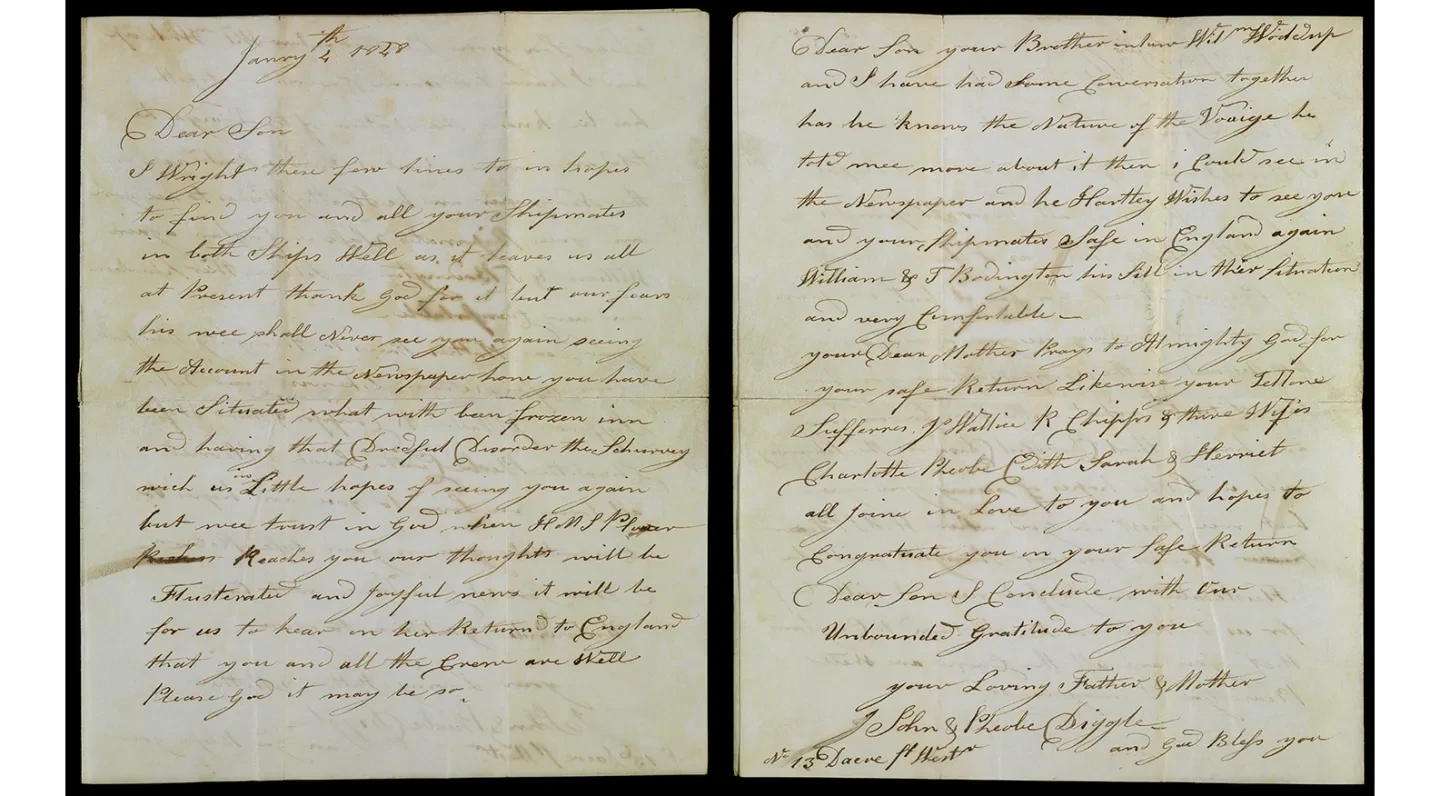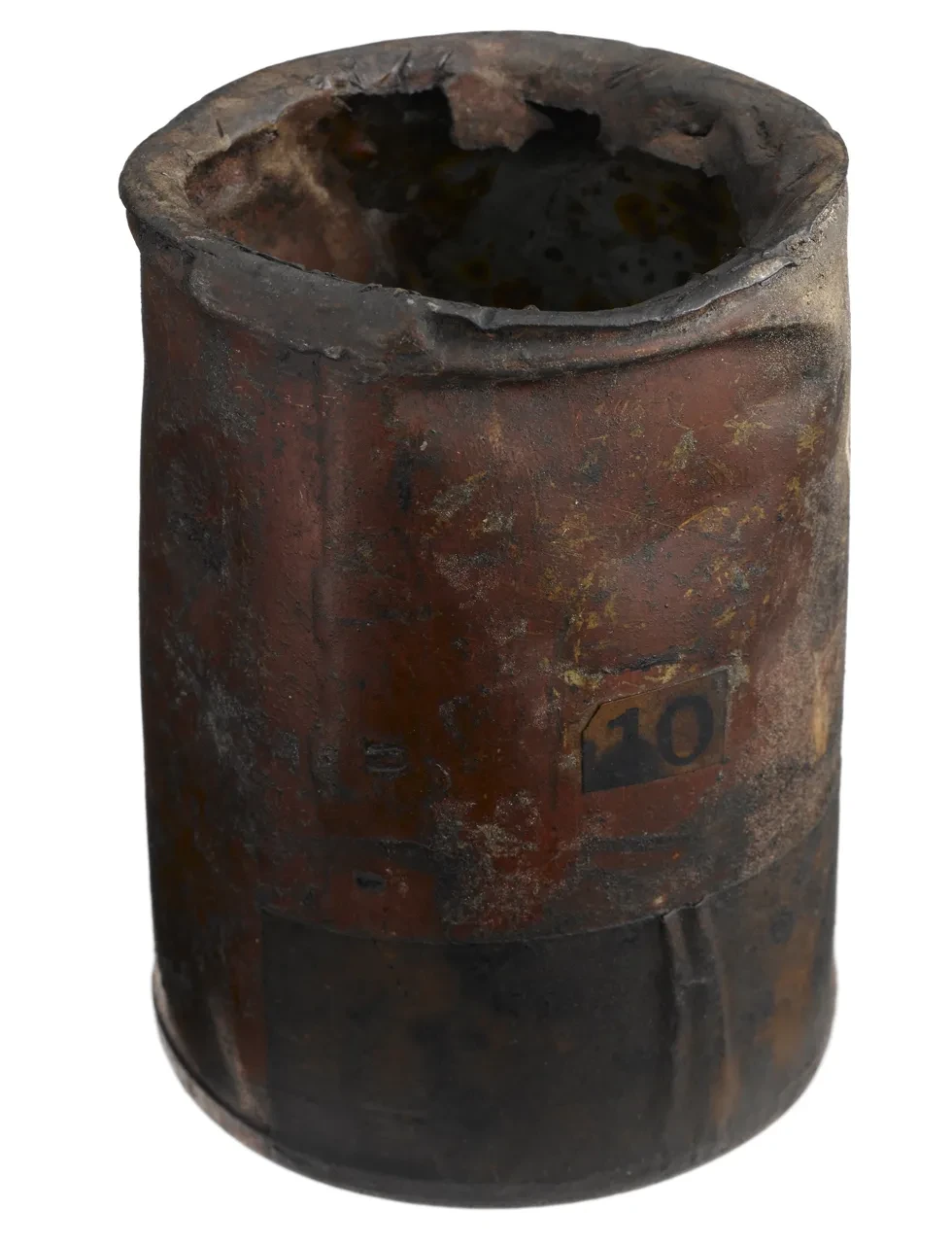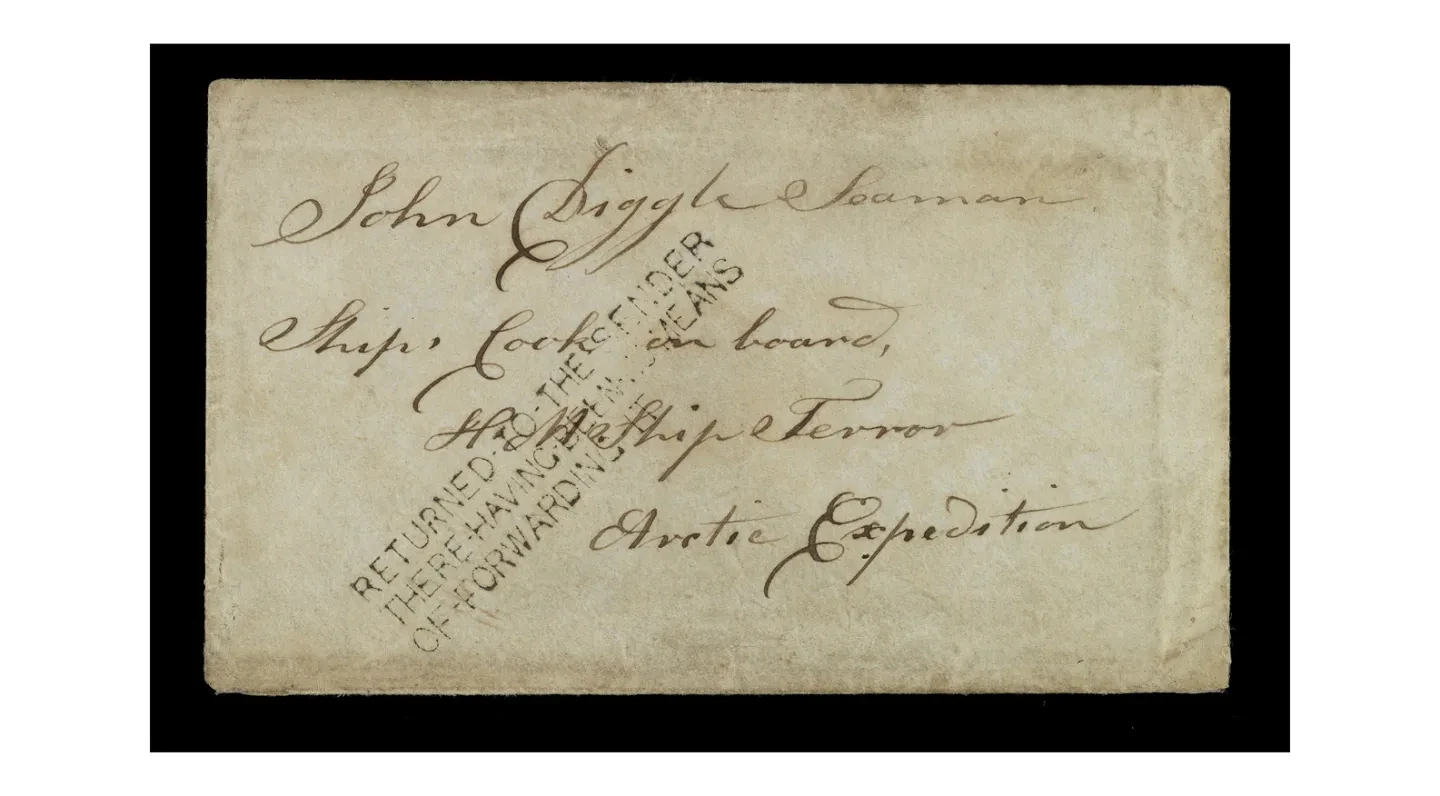
We know a lot about Sir John Franklin. By the time he led the expedition to the Arctic in 1845, he was a household name, a naval hero and one of the Navy's leading magnetic scientists. But what of the other 128 men who died on this fatal expedition? What do we know about them? Jeremy Michell investigates the life of the ship's cook, John Diggle.
John Diggle was the cook on board HMS Terror, one of the two ships lost in the Arctic during the expedition of 1845, led by Sir John Franklin.
Dear Son, I write these few lines…
This is a two-page letter addressed to John Diggle by his parents Phoebe and John, dated 4 January 1848. In the letter his parents express their anxieties about his safety, based on speculation from the papers.

"…but our fears his [is] wee shall never see you again seeing the Account in the Newspaper how you have been situated what with been frozen inn and having that dreadful disorder Schervey [Scurvy]…" (sic)

Picture: soup tin found in the Arctic, a remnant from the Franklin expedition.
Becoming an explorer... and a father
Prior to the 1845 expedition, John had served on board HMS Confiance and HMS Telavara where he was involved in blockading the Dutch coast during the Dutch-Belgian war.
On 2 August 1834, two months before he left England for the East Indies on the 18-gun ship sloop HMS Wolf, John Diggle married Mary Ann Johnson at Stoke Damerel in Devon. He didn’t return to England again until 1838.
Home for only a year, in 1839 he signed onto HMS Erebus for its voyage of exploration and science to Antarctica as an Able Seaman – being promoted to quartermaster at some point during the voyage.
In 1840, while he was away in the Antarctic, his daughter Mary Ann Erebus Diggle was born. The 1841 Census records that mother and daughter remained with her parents in Stoke Damerel. The relationship between John and Mary Ann is unclear because his 1845 Allotment Declaration - where John allotted money from his pay - indicates that £2.4s was assigned to his mother rather than to his wife.
The fateful voyage
After returning from the Antarctic in 1843 Diggle signed on as cook for HMS Terror for the new Arctic expedition to be led by Sir John Franklin. The Muster Book for Terror indicates that John was born in Westminster around 1809 and that he was 36 years old when he signed on for the Franklin expedition.
"Your dear mother prays to Almighty God for your safe return..."
"...all join in love to you and hope to congratulate you on your safe return."
